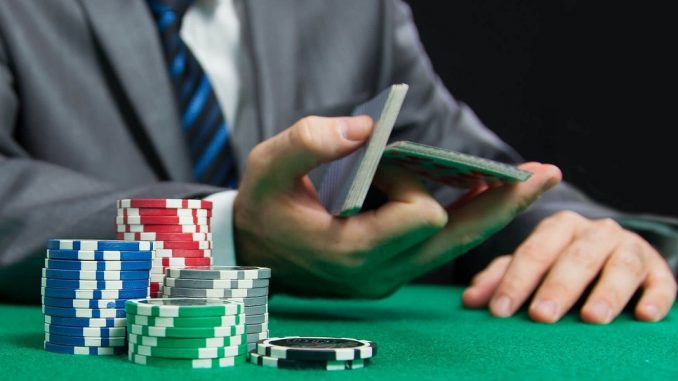
Among all the concepts that are essential to win a poker game, table position is one of the most important, especially in Texas Hold’em.
To opt for victory it is essential to recognize what is the position at the table, how to recognize it, where to apply it and how to incorporate it into the game.
During an online poker game it is essential to recognize the position you occupy to avoid losing large amounts of money.
The basics about table position in poker
In essence, table position refers to where a player is in relation to the button, the small disc that runs across the table, determining who posts the small and big blinds. It is convenient to differentiate three main areas of position: early position (EP), middle position (MP) and late position (LP).
The initial position in a poker game
Assuming that a full game is played with ten players, the player who occupies the first position is one of the first players to act as soon as the game begins. “This means that preflop all players immediately to the left of the big blind are considered to be in early position,” says the team at Habwin, one of the most successful poker platforms nowadays. “The first person to act behind the blinds is called UTG, Under The Gun, which is the figure that initiates the action.”
With few exceptions, having a starting position is considered a handicap because it inhibits the ability to react with respect to the opponents, giving a significant strategic advantage to the opponents. “By being the first to act, opponents will always have a greater ability to react once the EP player has taken an action, but this can be used against the other players, finding ways to disrupt or exploit the game when simply the rest can only wait to see what action is executed,” they explain from Habwin.
Middle position in poker
Players who are to the left of EPs are considered middle position players. “Being in this position has more or less the same advantages as being in a starting position, since there are opponents who can react to your actions once they have already decided what to do,” the platform says.
“Although you have the advantage over the EP players, being able to see their moves before the action comes, the players in last position have the same margin,” they explain from habwin.com. “In addition, being in an intermediate position exposes the player to suffer what is called ‘the squeeze game’, which compromises the player’s position by getting stuck in a complicated situation,” they say.
This often happens when you are trying to call a bet from a player in EP, but he is either raising or is being seriously threatened by another player in late position to be raised. “This has certain dangers, as there is a possibility that the player may want to slow down the action when he has a marginal card. Also, if he doesn’t trust his opponent to act behind in late position and the EP player is very aggressive or has a good hand, he could start forcing him to deliver more chips to the hand,” they explain.
Everything you need to know about late position
Players who act in late position are those who occupy late position (LP). Late positions are in turn divided into two figures, which are the ones that close: the cut-off, the penultimate to speak, and the button, which is the one that closes the round.
Occupying a late position in poker is especially advantageous in a Texas Hold’em game because of its own game dynamics. “Being in a late position allows the player to encounter peculiar situations,” says the Habwin team, “If the hand has passed you and no one has bet into the pot, it is highly likely that you will have the opportunity to bluff the pot at that very moment to take it,” says the platform.
This stealing situation is virtually impossible to occur in early or middle position, since it is impossible to know the strength of the opponents’ hands talking after them, and making a blind bet is dangerous and reckless. “If a player is in late position and can see nothing but check ahead, it indicates that most likely the opponents have nothing of value, making the bluff play much safer,” they say.
“Semi-bluffing can also be an ideal play to be in late position, which is to raise to a player who bets in early or middle position when you are still drawing a better hand, something along the lines of a straight,” the Habwin team explains. “This play is really good because by raising, the opponent will panic and may fold, and it can also cause the opponent to slow down his action on his own and check with you on the turn if he pays your raise during the flop,” they add.
The semi-bluff is known as a “free card” when it ends with a check on the turn, as it allows you to see the river card for free: “In reality, you already paid a small extra bet on the flop with the raise to see the river card, but the amount in proportion can be so small that the player is considered free to see the card,” they say.

Leave a Reply